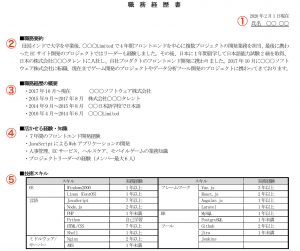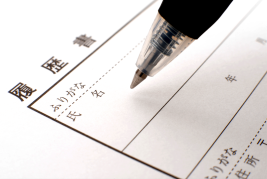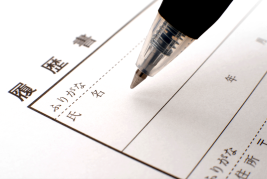Are you an IT professional planning to work in Japan? One of the first hurdles you will face is preparing the correct job application documents for Japan. Unlike in Western countries, where a single 1-2 page resume is sufficient, Japanese companies typically require two distinct documents: the "Rirekisho" and the "Shokumu Keirekisho."
For software engineers and technical professionals, the Shokumu Keirekisho (Curriculum Vitae / Career History) is the most critical document. It is where you showcase your technical stack, project experience, and engineering skills.
In this guide, we will explain the standard Japanese CV format, provide an IT engineer CV example, and offer a Japanese CV template specifically designed for developers.
Note: If you are worried about the language barrier or finding companies that accept English CVs, GTalent specializes in connecting global engineers with English-speaking tech jobs in Japan.
[Free Template] Complete Guide to Japanese Resumes for IT Engineers
Contents
Job Application Documents in Japan: Rirekisho vs Shokumu Keirekisho
Before diving into the writing process, it is essential to understand the difference between the two required documents. This is a common point of confusion known as the Japanese resume vs CV.
Rirekisho (Japanese Resume)
A standardized form that acts as a simple profile. It includes your photo, education history, brief employment timeline, and basic personal information. It is static and factual.
Shokumu Keirekisho (Career History / Japanese CV)
A detailed document describing what you did in your previous jobs. For engineers, this acts as a technical resume for Japan. It details your projects, the technologies used (languages, frameworks, tools), and your specific contributions.
While the Rirekisho is a formality, the Shokumu Keirekisho is what gets you the interview.
Download Your Software Engineer CV Template
Ready to start writing? You don't need to start from scratch. We have prepared a software engineer CV template that follows the industry standard in Japan.
Download Template職務経歴書(Template with English guidance).docx
※ Available in Microsoft Word format.
Pro Tip: Once you complete your Shokumu Keirekisho, don't just keep it on your desktop. GitTap is a job platform specifically for foreign IT engineers in Japan. By uploading your profile and skill sheet there, Japanese tech companies can scout you directly based on your technical stack.
How to Write a Shokumu Keirekisho for Engineers
Writing a Shokumu Keirekisho can be daunting, but following a standard structure makes it easier. An effective Engineer CV in Japan should generally include the following sections:
Sections 1–5: Basic Information & Skills Summary

- Name & Date: Always include the submission date. Avoid using a date older than 3 months, as it may give the impression that you are reusing an outdated document.
- Professional Summary: Summarize your entire career in 3 to 5 lines. Hiring managers use this section to decide whether to keep reading your resume.
- Work History Overview: List your work experience in reverse chronological order (starting with your most recent position).
- Core Competencies & Knowledge: Use bullet points to highlight your key strengths and areas of expertise.
- Technical Skills (Crucial):
IT: List languages, frameworks, OS, databases, and tools (e.g., AWS, Docker).
Mechanical & Electrical (M&E): List CAD software (e.g., CATIA, NX, SolidWorks), measuring instruments, PLCs, and safety standards (e.g., ISO 26262).
Note: Organize these in a table format along with your "years of professional experience" for each skill.
Section 6: Work Experience (The Core of Your Resume)
This is the most critical part of your application. List your projects starting from the most recent. The key is to focus not just on what you did, but on how you contributed.
- Project Duration & Scale: Include the timeframe, team size, and budget (if applicable).
- Role: Clearly state your position (e.g., Individual Contributor, Team Lead, Project Manager).
- Project Phases (Scope of Work):
IT: Requirements Definition, Basic Design, Detailed Design, Implementation/Coding, Testing, Operations & Maintenance.
M&E: Conceptual Design, Detailed Design, Analysis (CAE), Prototyping, Testing/Evaluation, Mass Production Launch. - Achievements & Outcomes: Focus on quantitative results. For example: "Reduced costs by X%," "Improved yield by X%," or “Shortened delivery lead time by X days.”
Shokumu Keirekisho Translation: Tips for Foreign Engineers
A common mistake is simply using a translation tool to convert your English resume into Japanese. This often fails because the Shokumu Keirekisho translation requires localization, not just translation.
English resumes are often concise (1-2 pages). A Shokumu Keirekisho is expected to be more detailed (2-4 pages for experienced engineers). When translating, you often need to expand on your English bullet points to fit the descriptive style of the Japanese CV format.
If you are not confident in your business Japanese, it is highly recommended to have your CV reviewed by a bilingual recruitment agent.
Conclusion
Creating a high-quality Shokumu Keirekisho is your first step toward a successful career in Japan. By focusing on a clear Skill Sheet and a detailed Project History, you can effectively communicate your value as an engineer to Japanese hiring managers.
If you need professional advice on your Japanese CV or want to find high-paying tech jobs in Japan, contact GTalent today.
Ready to take the next step?
For Direct Offers: Register on GitTap to get scouted by tech companies looking for your specific skills.
For Career Advice: Consult with GTalent agents to find high-paying, non-public-sector jobs that meet your visa requirements.








